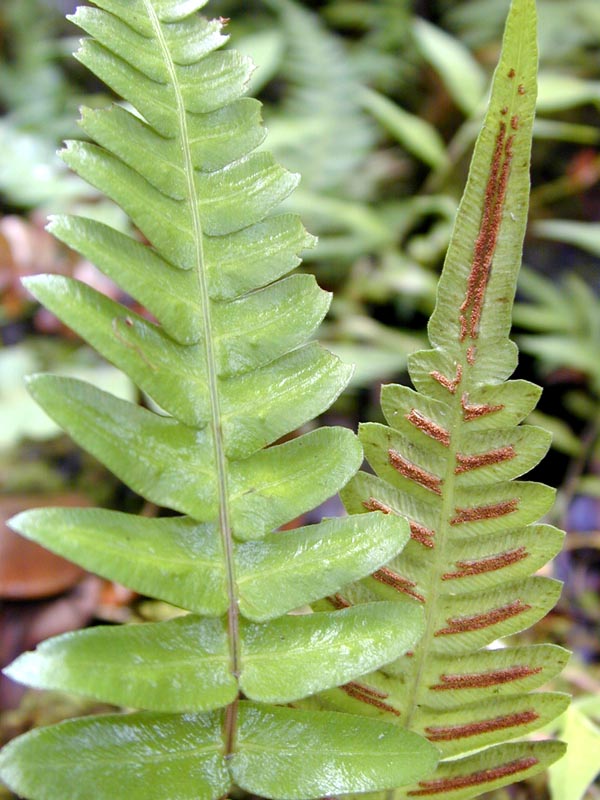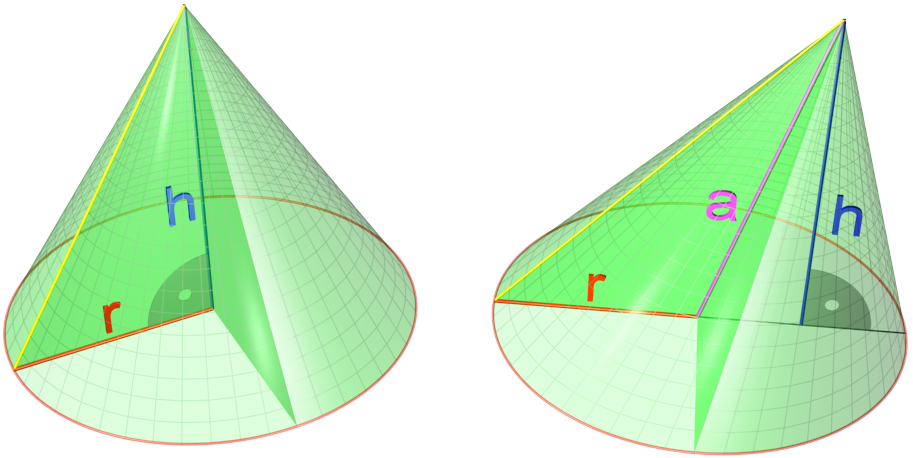|
Zamia Decumbens
''Zamia decumbens'', common name sinkhole cycad, is a species of cycad known only from Belize. The species was erroneously referred to in print several times as ''Z. prasina'' before its recognition as a distinct species. The species was (under the name Z. prasina) proposed for protection as a critically endangered species. As of 2009, 7 populations were known in the Maya Mountains, a few on ridges and mountaintops but the largest populations at the bottom of sinkholes. Sinkholes are depressions in the earth caused by Collapse cavern, collapse of the roof of a cave. They very frequently are home to unusual plants and animals because they usually have water at the bottom, and because the steep walls protect the sinkholes from herbivores. ''Zamia decumbens'' is unusual in the genus in having decumbent stems, i.e. trunks that run horizontally along the ground rather than growing straight up. The plant occasionally dies at the base while forming new roots farther up the stem. There ... [...More Info...] [...Related Items...] OR: [Wikipedia] [Google] [Baidu] |
Cycad
Cycads are seed plants that typically have a stout and woody (ligneous) trunk with a crown of large, hard, stiff, evergreen and (usually) pinnate leaves. The species are dioecious, that is, individual plants of a species are either male or female. Cycads vary in size from having trunks only a few centimeters to several meters tall. They typically grow very slowly and live very long. Because of their superficial resemblance, they are sometimes mistaken for palms or ferns, but they are not closely related to either group. Cycads are gymnosperms (naked-seeded), meaning their unfertilized seeds are open to the air to be directly fertilized by pollination, as contrasted with angiosperms, which have enclosed seeds with more complex fertilization arrangements. Cycads have very specialized pollinators, usually a specific species of beetle. Both male and female cycads bear cones (strobili), somewhat similar to conifer cones. Cycads have been reported to fix nitrogen in association ... [...More Info...] [...Related Items...] OR: [Wikipedia] [Google] [Baidu] |
Belize
Belize (; bzj, Bileez) is a Caribbean and Central American country on the northeastern coast of Central America. It is bordered by Mexico to the north, the Caribbean Sea to the east, and Guatemala to the west and south. It also shares a water boundary with Honduras to the southeast. It has an area of and a population of 441,471 (2022). Its mainland is about long and wide. It is the least populated and least densely populated country in Central America. Its population growth rate of 1.87% per year (2018 estimate) is the second-highest in the region and one of the highest in the Western Hemisphere. Its capital is Belmopan, and its largest city is the namesake city of Belize City. Belize is often thought of as a Caribbean country in Central America because it has a history similar to that of English-speaking Caribbean nations. Indeed, Belize’s institutions and official language reflect its history as a British colony. The Maya civilization spread into the area of B ... [...More Info...] [...Related Items...] OR: [Wikipedia] [Google] [Baidu] |
Maya Mountains
The Maya Mountains are a mountain range located in Belize and eastern Guatemala, in Central America. Etymology The Maya Mountains were known as the ''Cockscomb'' or ''Coxcomb Mountains'' to Baymen and later Belizeans at least until the mid-20th century. Their current appellation is thought to be in honour of the Mayan civilisation. Geography Physical Peaks The range's highest peaks are Doyle's Delight at and Victoria Peak at . Rivers Nine streams with a Strahler order greater than 1 flow from the Mountains into the Caribbean Sea, namely, five tributaries of the Belize River, two tributaries of the Monkey River, and the Sittee River and Boom Creek. Karst Prominent karstic features within the Mountains include the Chiquibul Spring and Cave System, the Vaca Plateau, the Southern and Northern Boundary Faults, and possibly an aquifer contiguous with that of the Yucatan Peninsula. Plutons The Mountains 'are the only source of igneous and metamorphic materials' in Be ... [...More Info...] [...Related Items...] OR: [Wikipedia] [Google] [Baidu] |
Sinkholes
A sinkhole is a depression or hole in the ground caused by some form of collapse of the surface layer. The term is sometimes used to refer to doline, enclosed depressions that are locally also known as ''vrtače'' and shakeholes, and to openings where surface water enters into underground passages known as '' ponor'', swallow hole or swallet. A ''cenote'' is a type of sinkhole that exposes groundwater underneath. A ''sink'' or ''stream sink'' are more general terms for sites that drain surface water, possibly by infiltration into sediment or crumbled rock. Most sinkholes are caused by karst processes – the chemical dissolution of carbonate rocks, collapse or suffosion processes. Sinkholes are usually circular and vary in size from tens to hundreds of meters both in diameter and depth, and vary in form from soil-lined bowls to bedrock-edged chasms. Sinkholes may form gradually or suddenly, and are found worldwide. Formation Natural processes Sinkholes may capture su ... [...More Info...] [...Related Items...] OR: [Wikipedia] [Google] [Baidu] |
Collapse Cavern
A cave or cavern is a natural void in the ground, specifically a space large enough for a human to enter. Caves often form by the weathering of rock and often extend deep underground. The word ''cave'' can refer to smaller openings such as sea caves, rock shelters, and grottos, that extend a relatively short distance into the rock and they are called ''exogene'' caves. Caves which extend further underground than the opening is wide are called ''endogene'' caves. Speleology is the science of exploration and study of all aspects of caves and the cave environment. Visiting or exploring caves for recreation may be called ''caving'', ''potholing'', or ''spelunking''. Formation types The formation and development of caves is known as ''speleogenesis''; it can occur over the course of millions of years. Caves can range widely in size, and are formed by various geological processes. These may involve a combination of chemical processes, erosion by water, tectonic forces, microorganisms ... [...More Info...] [...Related Items...] OR: [Wikipedia] [Google] [Baidu] |
Cylindrical
A cylinder (from ) has traditionally been a three-dimensional solid, one of the most basic of curvilinear geometric shapes. In elementary geometry, it is considered a prism with a circle as its base. A cylinder may also be defined as an infinite curvilinear surface in various modern branches of geometry and topology. The shift in the basic meaning—solid versus surface (as in ball and sphere)—has created some ambiguity with terminology. The two concepts may be distinguished by referring to solid cylinders and cylindrical surfaces. In the literature the unadorned term cylinder could refer to either of these or to an even more specialized object, the ''right circular cylinder''. Types The definitions and results in this section are taken from the 1913 text ''Plane and Solid Geometry'' by George Wentworth and David Eugene Smith . A ' is a surface consisting of all the points on all the lines which are parallel to a given line and which pass through a fixed plane curve ... [...More Info...] [...Related Items...] OR: [Wikipedia] [Google] [Baidu] |
Pinnately
Pinnation (also called pennation) is the arrangement of feather-like or multi-divided features arising from both sides of a common axis. Pinnation occurs in biological morphology, in crystals, such as some forms of ice or metal crystals, and in patterns of erosion or stream beds. The term derives from the Latin word ''pinna'' meaning "feather", "wing", or " fin". A similar concept is "pectination," which is a comb-like arrangement of parts (arising from one side of an axis only). Pinnation is commonly referred to in contrast to "palmation," in which the parts or structures radiate out from a common point. The terms "pinnation" and "pennation" are cognate, and although they are sometimes used distinctly, there is no consistent difference in the meaning or usage of the two words.Jackson, Benjamin, Daydon; A Glossary of Botanic Terms with their Derivation and Accent; Published by Gerald Duckworth & Co. London, 4th ed 1928 Plants Botanically, pinnation is an arrangement of d ... [...More Info...] [...Related Items...] OR: [Wikipedia] [Google] [Baidu] |
Leaflet (botany)
A leaflet (occasionally called foliole) in botany is a leaf-like part of a compound leaf. Though it resembles an entire leaf, a leaflet is not borne on a main plant stem or branch, as a leaf is, but rather on a petiole or a branch of the leaf. Compound leaves are common in many plant families and they differ widely in morphology. The two main classes of compound leaf morphology are palmate and pinnate. For example, a '' hemp'' plant has palmate compound leaves, whereas some species of ''Acacia'' have pinnate leaves. The ultimate free division (or leaflet) of a compound leaf, or a pinnate subdivision of a multipinnate leaf is called a pinnule or pinnula. Image:Ветвь акации.jpg, Pinnate leaf of a legume A legume () is a plant in the family Fabaceae (or Leguminosae), or the fruit or seed of such a plant. When used as a dry grain, the seed is also called a pulse. Legumes are grown agriculturally, primarily for human consumption, for livestock fo ... with 10 le ... [...More Info...] [...Related Items...] OR: [Wikipedia] [Google] [Baidu] |
Lanceolate
The following is a list of terms which are used to describe leaf morphology in the description and taxonomy of plants. Leaves may be simple (a single leaf blade or lamina) or compound (with several leaflets). The edge of the leaf may be regular or irregular, may be smooth or bearing hair, bristles or spines. For more terms describing other aspects of leaves besides their overall morphology see the leaf article. The terms listed here all are supported by technical and professional usage, but they cannot be represented as mandatory or undebatable; readers must use their judgement. Authors often use terms arbitrarily, or coin them to taste, possibly in ignorance of established terms, and it is not always clear whether because of ignorance, or personal preference, or because usages change with time or context, or because of variation between specimens, even specimens from the same plant. For example, whether to call leaves on the same tree "acuminate", "lanceolate", or "linear" co ... [...More Info...] [...Related Items...] OR: [Wikipedia] [Google] [Baidu] |
Microsporangia
Microsporangia are sporangia that produce microspores that give rise to male gametophytes when they germinate. Microsporangia occur in all vascular plants that have heterosporic life cycles, such as seed plants, spike mosses and the aquatic fern genus '' Azolla''. In gymnosperms and angiosperm anthers, the microsporangia produce microsporocytes, the microspore mother cells, which then produce four microspores through the process of meiosis. Microsporocytes are produced in the microsporangia of gymnosperm cones and the anthers of angiosperms. They are diploid microspore mother- cells, which then produce four haploid microspores through the process of meiosis. These become pollen grains, within which the microspores divide twice by mitosis to produce a very simple gametophyte. Heterosporous plants that produced microspores in microsporangia and megaspores in separate megasporangia evolved independently in several plant groups during the Devonian period. Fossils of these pla ... [...More Info...] [...Related Items...] OR: [Wikipedia] [Google] [Baidu] |
Cone (botany)
A conifer cone (in formal botanical usage: strobilus, plural strobili) is a seed-bearing organ on gymnosperm plants. It is usually woody, ovoid to globular, including scales and bracts arranged around a central axis, especially in conifers and cycads. The cone of Pinophyta (conifer clade) contains the reproductive structures. The woody cone is the female cone, which produces seeds. The male cone, which produces pollen, is usually herbaceous and much less conspicuous even at full maturity. The name "cone" derives from Greek ''konos'' (pine cone), which also gave name to the geometric cone. The individual plates of a cone are known as ''scales''. The ''umbo'' of a conifer cone refers to the first year's growth of a seed scale on the cone, showing up as a protuberance at the end of the two-year-old scale. The male cone (microstrobilus or pollen cone) is structurally similar across all conifers, differing only in small ways (mostly in scale arrangement) from species to species. ... [...More Info...] [...Related Items...] OR: [Wikipedia] [Google] [Baidu] |
Conical
A cone is a three-dimensional geometric shape that tapers smoothly from a flat base (frequently, though not necessarily, circular) to a point called the apex or vertex. A cone is formed by a set of line segments, half-lines, or lines connecting a common point, the apex, to all of the points on a base that is in a plane that does not contain the apex. Depending on the author, the base may be restricted to be a circle, any one-dimensional quadratic form in the plane, any closed one-dimensional figure, or any of the above plus all the enclosed points. If the enclosed points are included in the base, the cone is a solid object; otherwise it is a two-dimensional object in three-dimensional space. In the case of a solid object, the boundary formed by these lines or partial lines is called the ''lateral surface''; if the lateral surface is unbounded, it is a conical surface. In the case of line segments, the cone does not extend beyond the base, while in the case of half-lines, ... [...More Info...] [...Related Items...] OR: [Wikipedia] [Google] [Baidu] |
.jpg)
.jpg)




